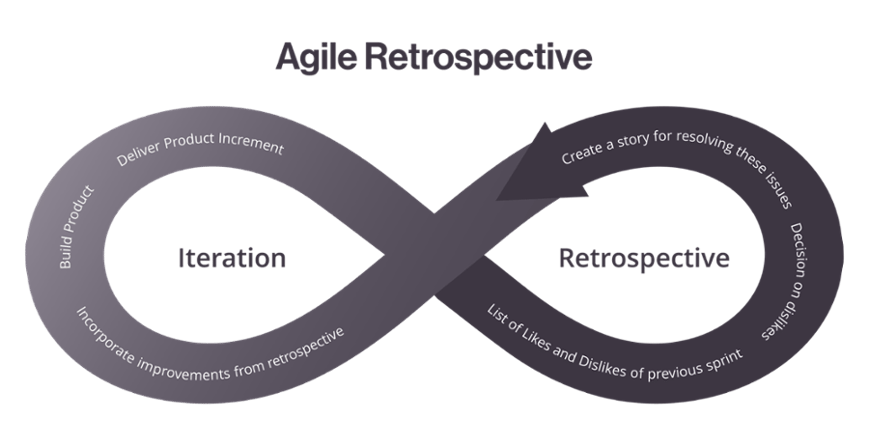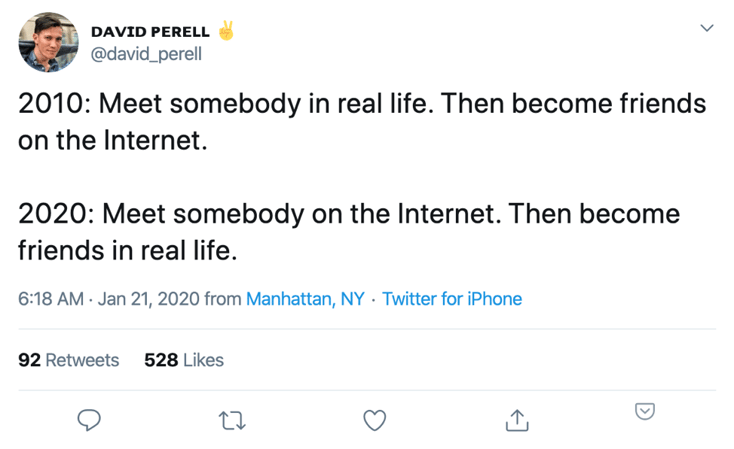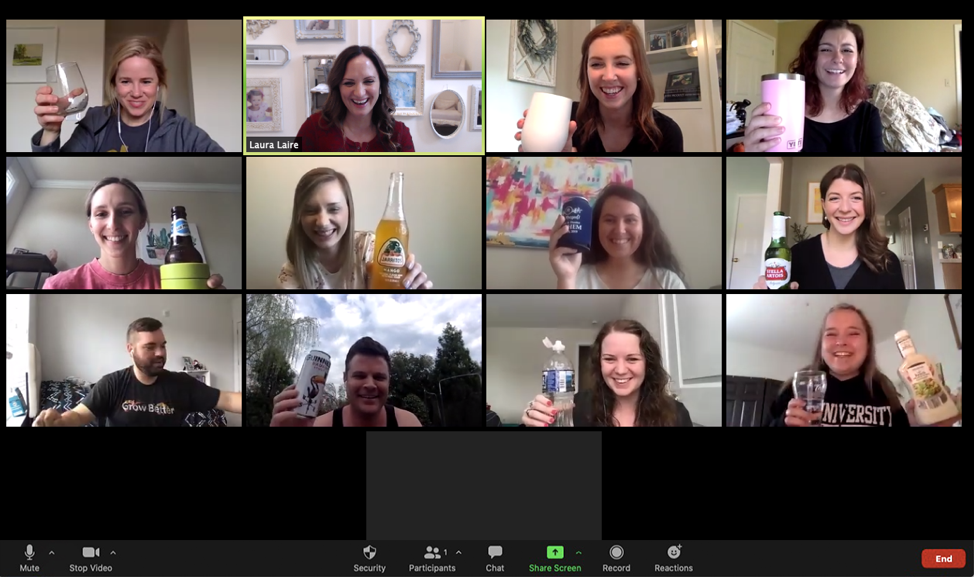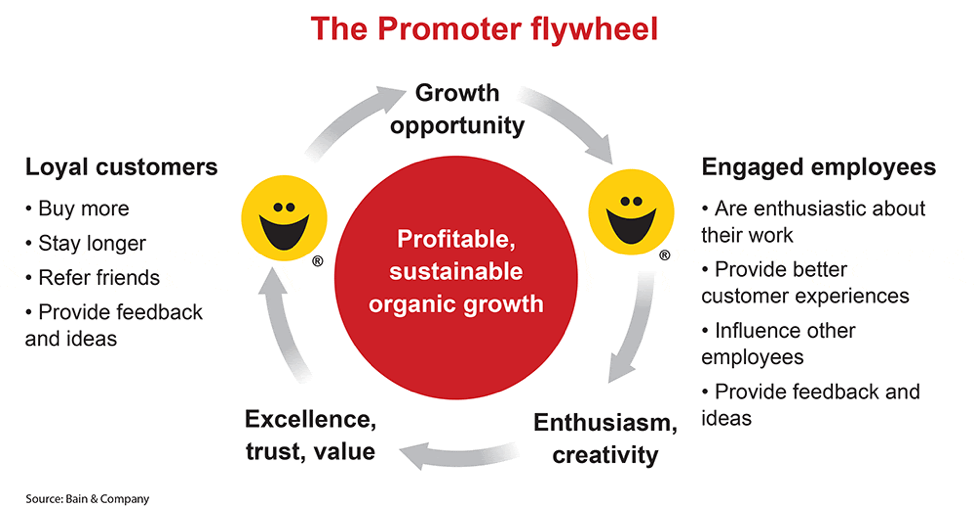In the past, working from home was an option for a connected few, but then 2020 happened, and remote work is now the norm. Although the benefits of working remotely are clear, managing a productive remote marketing team is a little more challenging.
Many companies tried and failed when they first attempted to employ remote marketing teams. Some companies have been able to maintain a connection with their team, but they’ve never really been able to see them thrive, or be productive and cost-effective while remote.
We’ve put together a list of 7 comprehensive strategies we’ve implemented that have helped us thrive in an otherwise down market to maximize the productivity and collaboration of our remote marketing team.
7 Strategies to Maximize the Productivity and Collaboration of a Remote Marketing Team
1. Hire the right people
Attract people who are purpose-driven, eager to learn, and want to grow by sharing those skills with other team members. Always hire for a culture fit first over experience. Skills can be learned but you can’t turn a rhino into a unicorn.
Creating a better work environment and improving your culture will attract better talent from within. After all, some of your best employees could be referrals from your current team. No one knows who you need better than someone who is close to the position or who has been in it, and let’s face it, LinkedIn isn’t the cheapest alternative when you need to post jobs.
Experience is great, however, we’ve all hired people with great resumes who ended up burning the house down and taking no survivors with them. Instead of interviewing and hiring, treat the experience like you do your inbound buyer’s journey. Applicants will go from awareness, to consideration, to the decision stage, and then when hired, through engagement, will become loyal and an advocate for your brand.
Just like customers, we want employees to be raving fans, not just interview, hire, and unfortunately sometimes fire. That is almost always a bad culture fit.
2. Set clear expectations and schedules
First, maximize the productivity of a remote marketing team by encouraging your staff to create a dedicated workspace they can enter when the workday starts, and leave mentally and physically when the workday is over. This will relieve burnout and also prevent distraction.
Office hours should be set, yet occasionally flexible through communication. Collaboration is not possible when one team member is working late into the night while another is keeping regular 8 - 5 working hours, so have a set schedule but be considerate. Everyone has life come up, and this is part of our culture.
If Spot needs to head to the vet, a Slack message letting us know what’s up will work as long as the working time is made up later in the day. This ensures the work is done and doesn’t pile up, making the team member overwhelmed or the rest of the team having to pick up the slack.
Getting out of pajamas and into work and Zoom appropriate clothing creates a mindset shift. I know it’s hard with that 30-second commute and all, but how you feel about yourself translates to your work. Although most people want to keep the Zoom camera off, we have set the expectation that during team meetings or client meetings, the camera is on, even if the client has it off. That means “business on top”, even if they’re in yoga pants or shorts on the bottom.
Looking professional makes you feel professional, and even if you aren’t, it’s a good start.

3. Adopt an Agile Mindset
One of the best decisions we've made was to implement an agile mindset, which “includes the following themes: respect, collaboration, improvement and learning cycles, pride in ownership, focus on delivering value, and the ability to adapt to change. This mindset is necessary to cultivate high-performing teams, who in turn deliver amazing value for their customers.”
In an agile marketing team, everyone involved should constantly be strategizing about how they can collaborate in the next 24 hours to get work done more efficiently and effectively, just like a football team huddles to decide what play to run next.

We built an agile marketing team and implemented daily scrums just before the 2020 stay-at-home orders, and remote work became the norm. This was a turning point for our organization and continues to be one of the best decisions we could’ve made to maximize the productivity and collaboration of our now remote marketing team. Scrum is intended to help marketers with a project management methodology that helps maximize productivity while providing a measure of progress to the entire team and management. This visibility enables everyone to “Get Sh*t Done” (GSD) without constant interruption and happens to be one of our favorite mottos.
Part of the scrum process is a daily 15-minute “Standup”, which is usually gathering together in person and standing to keep it brief. However, when working remotely, Zoom is the preferred method for our quick check-in.
The goal of the daily scrum is to talk about only three things: what you did yesterday, what you plan to do today, and any impediments or roadblocks you may have. This quick strategy session encourages the daily collaboration of a remote marketing team. To keep this meeting from becoming a boring check-in, we encourage our team members to ask for help, work out unclear tasks, and ask questions to solve problems daily while meeting with their team.

Our culture is one that encourages everyone to ask for help. In daily scrum, it is a common question managers ask. “Do you need help? Can someone take that off your plate? Will you be able to complete that? Who needs support today?”
When collaboration is encouraged daily, it becomes part of the norm and new employees feel comfortable asking for help from anyone on the team.
4. Promote Employee Engagement and Collaboration
We try to meet in person whenever possible, especially for important strategic planning sessions, but since our team is 100% remote right now, we also have a bi-weekly happy hour on Zoom to talk about personal things like who’s getting married (which is like half the team), who’s juicing every day #likeaboss, and what’s on tap for the weekend.
We encourage cameras to be on during our Happy Hours as this is essentially our digital water cooler. This has been a great way to find out things about each team member we never knew. Especially when the question to prompt participation is, “share one thing no one probably knows about you”. Happy Hours, whether at the local taco shack or online are a great team bonding experience for everyone.

Even though remote work is the norm, it is important to bring your team together at least once a year to encourage the collaboration of a remote marketing team and promote face-to-face interactions. Meeting in real life helps to build stronger and more meaningful relationships, allow for more collaborative and strategic thinking, and help team members interpret each other's emotions and intentions much easier. We like to get together for a holiday, lunch outing, or Saturday adventure (we’ve done white water rafting) which keeps the team engaged with each other, the company, and hopefully motivated to succeed.
Reminding remote marketing teams that they are psychologically safe is also important. Text-based communication can easily be misconstrued so feeling connected and safe should be part of the culture. Team members must be able to air grievances and opinions without feeling embarrassed, shunned, judged, or feel they may be at risk of losing their jobs just because they don’t agree. This is a comfort level that is established at every level of the company.
Nurturing and fostering relationships means the team will have each other’s back when they need it most. A tight team is an enduring one.

5. Provide the right tools
While we don’t believe you need 8 million different kinds of software, you do need the ones your team is requesting. Whatever makes their job easier and more efficient is always a good idea to invest in. However, there are many choices and a lot of overlap in what can prove to be a very costly operational expense every month.
Some of our favorite tools are
- Slack
- Zoom
- Loom
- HubSpot
- Jira
Slack
I’m not sure what we’d do without Slack. Rather than texting or creating endless email chains, Slack lets you connect with your team on topic-dedicated “channels” so you can communicate quickly and efficiently. Plus you can set up Slack to include only the people who need to be in that particular conversation. If you need a head-down/don’t-bother-me-for-a-couple-of-hours kind of day, you can set slack to “do not disturb” and barrel through work without interruption.
Zoom
I’m sure Zoom needs no explanation, but one way we use it to maximize the productivity of remote marketing teams is to record team trainings, and then store them in our team drive. This provides a great knowledge base for new team members to access when getting started, and we refer to these recordings in our on-boarding. If you continue to show each new team member how to do something over and over again, it creates a bottleneck. It’s worth the time to record a “how-to,” save it and share it with new team members later.
Loom
Loom is a video recording tool we have found to help not only team members but also clients when you need to screen record, as well as see your face, at the same time. Loom integrates with Slack so you can share the video link directly, or email it to clients. This is a huge time saver when you have clients who need to see how to do something. We all know how hard it is to explain something visual. As you record your screen, your face is recorded in a little bubble at the same time. It feels personal and professional.
HubSpot
HubSpot is our go-to for marketing software — so much so that we have become a Diamond HubSpot Partner and recommend it to our clients for CRM and marketing automation. The Inbound Methodology is the core of HubSpot and can help your revenue growth team communicate, set goals and expectations, and ultimately close deals.
Jira
Jira is our project management software and part of our commitment to Scrum. It has helped us seamlessly transition to a remote marketing team, where we were once in office full-time. We can estimate and plan a week's workload, leave tasks we’re not ready for in a backlog, and see what any team member is working on in real-time. While Jira can be complicated as a project management software, it’s probably as complicated as any of them we’ve used or looked at. The key is to use whatever software works for your team and iterate based on your growth.
6. Commit to Training and Improvement
With a remote marketing team, it is even more important to have processes, standardization, and training. Recruiting and hiring are only the beginning of the investment into a successful remote marketing team. Training and retaining are really when the work begins.
Every Friday we have a 30-minute team training session after our daily scrum. Different team members pitch in to present and train on a topic that the team would benefit from. We may evaluate new software as a team, collaborate in discussions, and go over best practices to make our work more productive. These are recorded and stored in the LAIRE library for later use to train new team members. New employees may want a refresher on writing for a B2B blog or the keys to writing blog content your audience will actually read, or whatever has been requested.
When building a remote marketing team it is important to have a strong focus on documentation and processes to create duplication within the organization and consistency in your team. Taking the time to do this initially and regularly saves time in the long run. We are consistently looking at improving, standardizing, and documenting processes for on-boarding, account management, and sales enablement to be more efficient long-term.
We are committed to improving our agency and the people we work with. So much so that we rebranded everything: our agency headquarters, company name, website, logo, tagline, colors, materials, etc., right in the middle of the pandemic. Nothing was left untouched. Updating your branding and website not only boosts morale internally, but can ultimately help your company grow, and attract your ideal client.
7. Performance Goals and Feedback
Because working from home can feel isolating, regular feedback and check-ins are super important for the growth, success, and collaboration of a remote marketing team. We designed a rubric for each role in our agency, that outlines what the job entails and a grading system to determine how successful each team member is at performing their duties. This is documented quarterly at check-ins and annual performance reviews.
Every 90 days, goals are set, training is recommended, and the team knows where they stand with performance.
This consistent feedback and attention to job responsibilities highlights where a team member is shining and also where they need to improve. Team members also have the opportunity to have a weekly or bi-weekly mini check-in with their manager to address client issues, job concerns, and share anything that’s on their mind. Whether the time is needed or not, it is available to them.
So as your company grows, the larger the team gets, the less engagement you will have. You will maximize the productivity of a remote marketing team by keeping it small. If you need more than 2 pizzas to feed the team it’s too big. So even though we need more than two pizzas for our whole team, we have small teams within the larger organization that collaborate and work intimately with one another.
Engaged and enthusiastic employees provide a better customer experience, as you can see in the promoter flywheel below. Enthusiasm is contagious so motivated team members will also influence their peers’ performance and energy levels. The ultimate goal is to create promoters within the organization which improves business performance, customer retention, and innovative ideas.

An important question to pose to your team is “How likely are you to recommend our company as a great place to work?” We find out the answer to questions like this by sending our team an NPS or Net Promoter Score survey several times a year, to which they can respond anonymously. Good and bad feedback both help you grow.
In closing, although we didn’t start as a remote marketing team, we are thriving as one.
Often when it feels like the ship is sinking, it is merely changing course. Changing direction and facing challenges head-on results in strategic thinking and real growth.
Recap
- Hire the right people
- Set clear expectations and schedules
- Adopt an agile mindset
- Promote employee engagement and collaboration
- Provide the right tools
- Commit to training and improvement
- Performance goals and feedback
Boundaries and expectations are the pathway to maximizing the productivity and collaboration of a remote marketing team. When employees have bought into the vision of your company, love the culture you are creating, and understand expectations, they can create great work within the set boundaries. The most important lesson we have learned from managing a remote marketing team is to give our team trust, and let them have a voice so they feel empowered and in control. That, and recognition of hard work, is what will motivate your team to stick it out no matter what curveballs are thrown their way.


